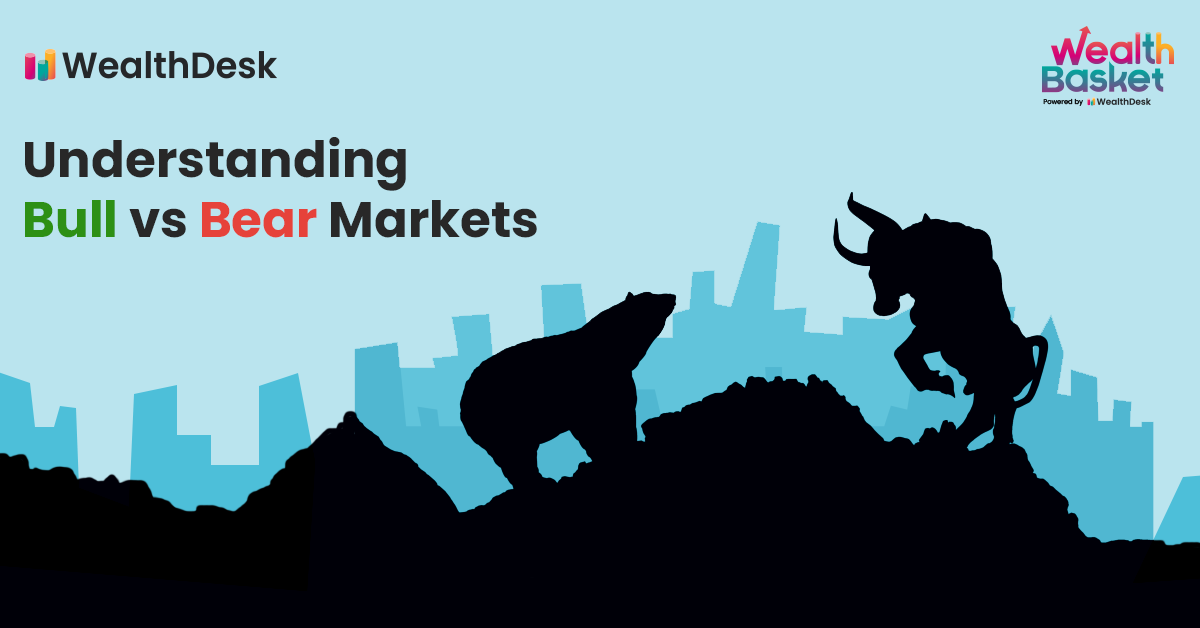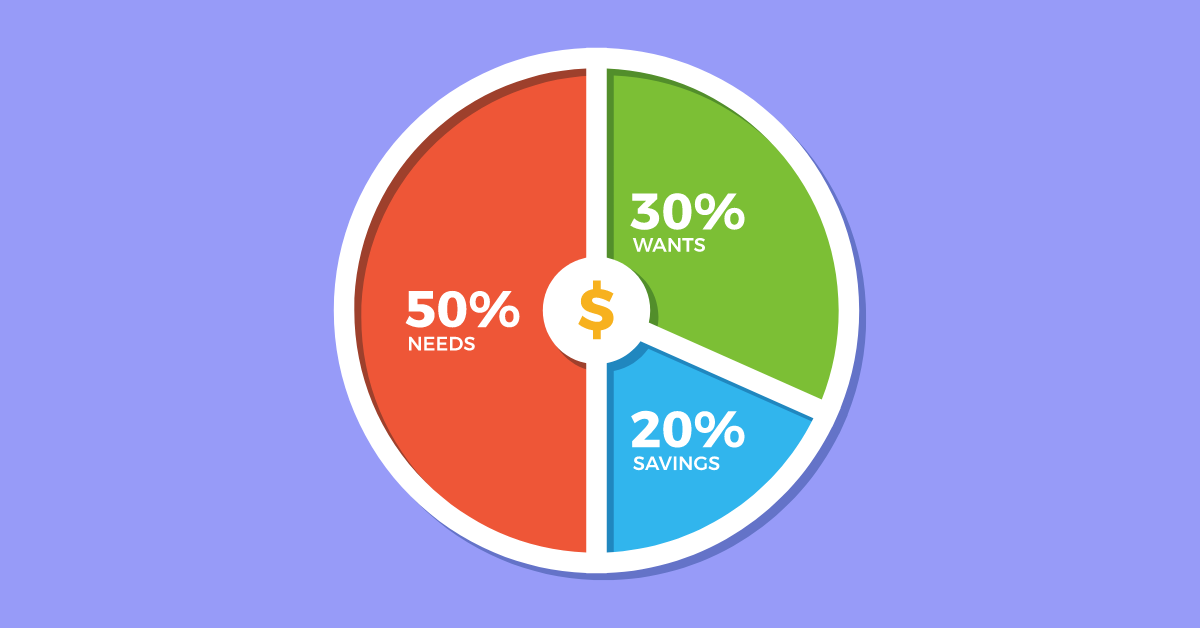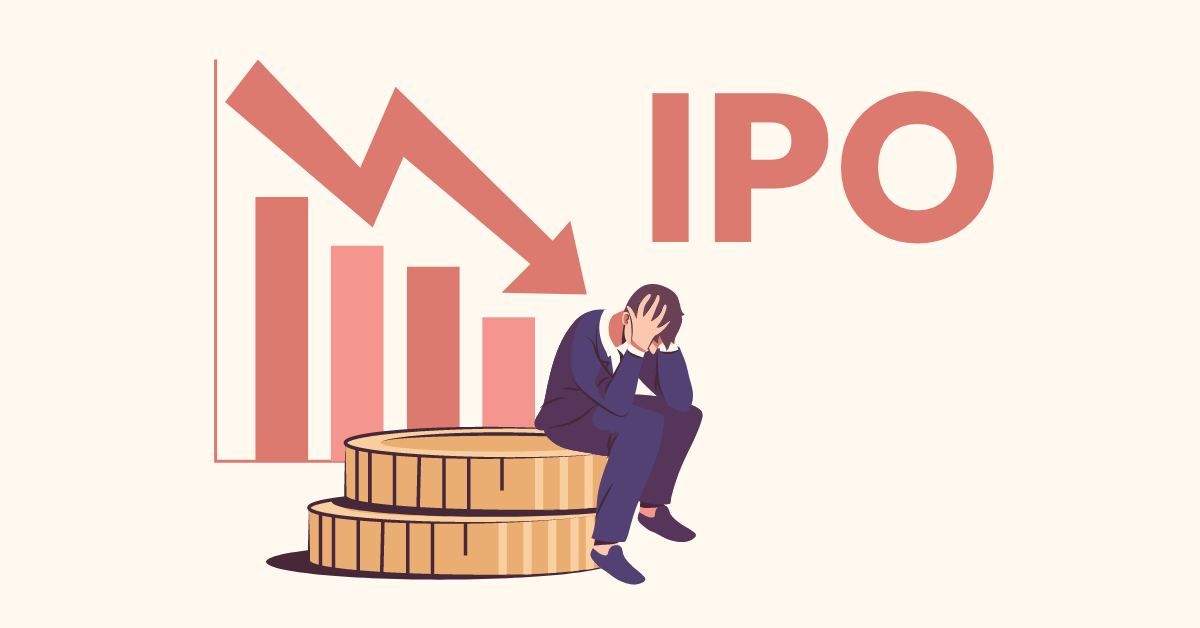-Are we heading towards a bearish market?
-Or, is it just a typical stock market cycle?
-Or, does the bullish stock market era end here?
As the stock market continues fluctuating – more downwards than upwards -the fear of a bear market starts hitting investors’ minds. Although the value of your investments is decreasing, it allows you to invest at a low price. But, what are the other consequences of a bear market? What should be your investment strategy during a bull market? Let’s find out all of them in this write-up.
This article will explain a bear market, a bull run stock market, what investment strategy you should have in both situations, and compare a bull market vs bear market.
What do we mean by Bull markets and Bear markets?
What is a Bull Market?
In a bull market, the stock prices rise more than 20%, mainly after declining more than 20%. In other words, before a bull run stock market, there is already a price drop in the stock market. Once the prices start going up, the existence of a bull market is considered only after the stock market rises more than 20%.
Bull markets are relatively more common than bear markets. They have occurred for 78% of the past 91 years. Bull markets can be classified into 2 types: secular and cyclical. Secular bull markets are characterized by mild volatility and last 5 to 25 years. They indicate sustained long-term growth. Cyclical bull markets last for periods shorter than 5 years.
What is a Bear Market?
A bear market exists when the price of the stocks continuously falls more than 20% from the latest high price. A bear market is when the investors will have a negative approach to investment, or they may fear losing money as the market continues crashing. Bear markets usually last for 9-10 months.
The long-term average frequency between bear markets is about 3.6 years. There are 2 types of bear markets: cyclical and secular. Cyclical bear markets occur periodically due to normal market volatility and may last for months. Secular bear markets last for multiple years (typically 10 to 20 years).
Investment Strategy During Bull Market – Buy, Sell or Hold
If you are holding investments in your portfolio for the long term, you do not need to worry about whether it is a bear or a bull market. Although you might be tempted to sell your shares in a bull market, you will have to wait longer to re-enter the stock market if you sell your shares.
If you have not invested for the long term and are in the age range of 20-40 years, then you should hold your shares without getting tempted to cash out the profits.
If you are a retired person and have made enough wealth as per your target, then you may sell your shares and cash out the profits as you may have already reached your investment goals.
Where to Invest in a Bear Market?
But then you might be confused as to how to make money in a bear market. Well, during a bear market, you might be better off by investing in fixed-income securities or investing in shares that have the potential to grow in the future because initially, you may incur some loss due to the bear market condition.
Bull vs Bear Markets: A comparison
The bull and bear market similarity is that they are both parts of a stock market cycle, and both are unavoidable. Below information provides the difference between a bull market and a bear market:
Price Fluctuation
The stock market price falls in a bear market more than 20% from its recent high while it rises more than 20% from its recent low in the bull market.
Sometimes, it is neither a bear nor a bull market – it is called a neutral market condition as the price drop and hike are not consistently for more than 20%. The price fluctuation of more than 5% or 10% or 15% may indicate a bear or bull market is nearing but does not guarantee it.
Changes in the Supply and Demand of Securities
The bull market calls for more demand for the securities than the supply, which means more people are willing to buy shares than sell the securities.
In contrast, the bear market changes economic activities to less spending because they would want to sell the securities than to buy. Hence, demand falls more for the securities than the supply of the securities.
Economic Activities Change
The economy strengthens during a bull market as people spend more and have higher profits. The reverse is true for the bear market, where the economy is weak, people will pay less, resulting in lower company earnings.
Investor’s Mental State
Investors mostly have a negative approach or fear buying stocks during a bear market. At the same time, they are confident and generally have a positive mental state during a bullish market.
The bull market’s length lasts longer than the bear market, especially when it bounces back quickly after a recent low.
There is no particular duration for the bear markets, but they may last from several weeks to a few years.
Closing Thoughts
Diversification is the key to staying stable during the bull and bear markets. If your portfolio is well-diversified, you will not fear nor will you be overjoyed during a bear or bull market. When you invest in various securities across sectors, you may have already covered yourself from the bull market vs bear market risks.
At WealthDesk, we provide baskets of ETFs and stocks, called WealthBaskets, carefully designed by SEBI-approved professionals.
FAQs
It is better to buy at a low price and sell at a higher price. This is why investors get an opportunity to invest during a bear market. But, the fear of the bear market stops investors from investing in securities whose prices are falling.
A bear market lasts on an average for 9-10 months, whereas the bull market may last for an average of 2-3 years.
Bear markets are often accompanied by recessions but not always. Bear markets are extended periods of downward trending stock prices. Recessions are periods of declining economic performance lasting for several months. When recessions occur, there is a possibility of bear markets if expectations for the future are affected considerably.
When a bull attacks, it will lift up its opponent. When a bear attacks, it will bring their opponent down. So, when markets are going up, we say we are experiencing a bull run. Similarly, when markets are going down, we say were are experiencing a a bear run.


















